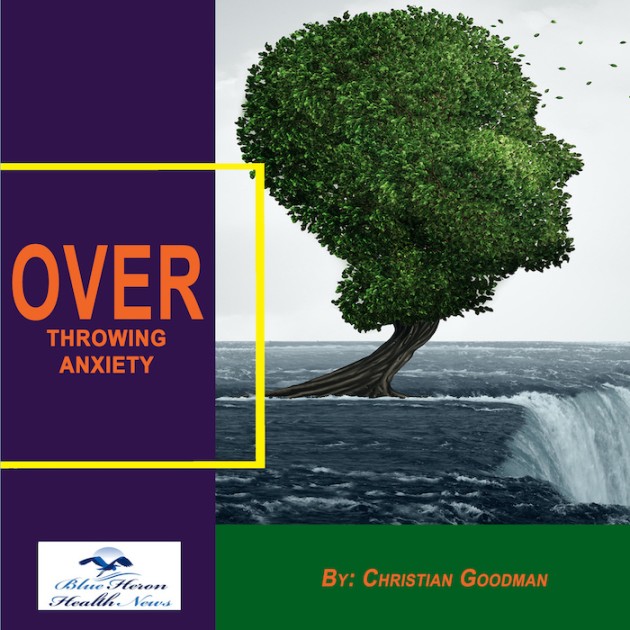
Overthrowing Anxiety™ This eBook includes a complete program to treat anxiety effectively. It guides you to learn the ways to find, understand, and accept the main cause of your anxiety and start using the techniques provided in it to treat the problem.
What is the connection between low blood pressure and thyroid function?
The connection between low blood pressure (hypotension) and thyroid function is significant, as the thyroid plays a key role in regulating various metabolic processes, including blood pressure. The thyroid produces hormones—thyroxine (T4) and triiodothyronine (T3)—that influence the heart rate, blood vessel function, and fluid balance, all of which affect blood pressure. Here’s how thyroid dysfunction, particularly hypothyroidism (underactive thyroid), can lead to low blood pressure:
1. Hypothyroidism and Low Blood Pressure
- Decreased heart rate: One of the primary effects of hypothyroidism is a slowed heart rate (bradycardia). Thyroid hormones help regulate the heart’s rhythm, so when levels of T3 and T4 are low, the heart may not beat as effectively or rapidly, which can lead to low blood pressure.
- Reduced cardiac output: Low thyroid hormone levels can decrease the heart’s ability to pump blood effectively, which reduces cardiac output (the amount of blood the heart pumps per minute). This can contribute to a drop in blood pressure.
- Weakened blood vessels: Thyroid hormones also help regulate the tone and elasticity of blood vessels. Low thyroid levels can result in blood vessels being less responsive to changes in blood volume, leading to a reduced ability to constrict, which can contribute to low blood pressure.
- Fluid imbalance: Hypothyroidism can also lead to fluid retention, which affects the volume of blood circulating in the body. This can impact blood pressure regulation, and in some cases, it can contribute to lower blood pressure if the blood volume is insufficient.
2. Hyperthyroidism and Low Blood Pressure
- Although less common, hyperthyroidism (overactive thyroid) can sometimes lead to a paradoxical drop in blood pressure. Hyperthyroidism increases heart rate and cardiac output, but in some cases, it can also lead to vasodilation (widening of blood vessels), particularly in the early stages, causing a reduction in vascular resistance. This can lead to low blood pressure.
- Increased blood flow to organs: Overproduction of thyroid hormones increases metabolism and blood flow to various organs. If the body cannot adjust to the excess blood flow, blood pressure may drop as the heart and circulatory system struggle to manage the increased demands.
3. Symptoms of Low Blood Pressure Due to Thyroid Dysfunction
When thyroid dysfunction causes low blood pressure, individuals may experience a variety of symptoms, including:
- Dizziness or lightheadedness, especially when standing up (orthostatic hypotension)
- Fatigue and weakness
- Cold intolerance (a common symptom of hypothyroidism)
- Fainting or near-fainting
- Low energy levels, which can be exacerbated by low blood pressure and thyroid imbalances.
4. Thyroid and Blood Pressure Regulation: Mechanisms
- Thyroid hormones and vasodilation: T3 and T4 help modulate the responsiveness of blood vessels. Low thyroid hormone levels can impair the ability of blood vessels to constrict, which can lead to a drop in blood pressure. Conversely, too much thyroid hormone can cause excessive vasodilation, which also reduces blood pressure.
- Thyroid hormones and the kidneys: Thyroid hormones influence renal (kidney) function, including fluid balance and sodium retention. A lack of thyroid hormone can impair kidney function, which may reduce the body’s ability to maintain proper fluid and electrolyte balance, contributing to low blood pressure.
5. Managing Low Blood Pressure in Thyroid Disorders
- Thyroid hormone replacement: The primary treatment for hypothyroidism is thyroid hormone replacement therapy (levothyroxine or synthetic T4). Proper management of thyroid levels can often correct low blood pressure caused by hypothyroidism.
- Monitoring thyroid function: Regular blood tests to monitor thyroid hormone levels are crucial to ensure that hypothyroidism or hyperthyroidism is well-controlled.
- Dietary considerations: If thyroid dysfunction is contributing to low blood pressure, a diet rich in iodine, selenium, and zinc can support thyroid health. Adequate hydration and salt intake may also help maintain blood pressure.
- Medication adjustments: In some cases, beta-blockers or vasopressors (medications that raise blood pressure) may be used if blood pressure is dangerously low, especially in the case of thyroid disorders.
6. Other Related Conditions
- Autoimmune thyroid disease (e.g., Hashimoto’s thyroiditis) can often be associated with other autoimmune conditions, including Addison’s disease (a disorder of the adrenal glands that can also cause low blood pressure), creating a complex situation where both thyroid and adrenal function contribute to blood pressure abnormalities.
- Secondary hypothyroidism: If low thyroid function is due to pituitary gland dysfunction, there may be additional complications that can affect blood pressure regulation, as the pituitary also controls other hormones involved in blood pressure, such as aldosterone.
Conclusion:
Thyroid function plays a crucial role in regulating blood pressure. Hypothyroidism can lead to low blood pressure by slowing the heart rate, reducing cardiac output, weakening blood vessels, and causing fluid retention. On the other hand, hyperthyroidism can also cause low blood pressure through vasodilation, though this is less common. Proper management of thyroid disorders through medication, diet, and lifestyle adjustments can help normalize blood pressure and improve overall well-being. If you experience symptoms of low blood pressure along with thyroid symptoms (such as fatigue, weight gain, or cold intolerance), it’s important to consult with a healthcare provider for appropriate diagnosis and treatment.
Overthrowing Anxiety™ This eBook includes a complete program to treat anxiety effectively. It guides you to learn the ways to find, understand, and accept the main cause of your anxiety and start using the techniques provided in it to treat the problem.
